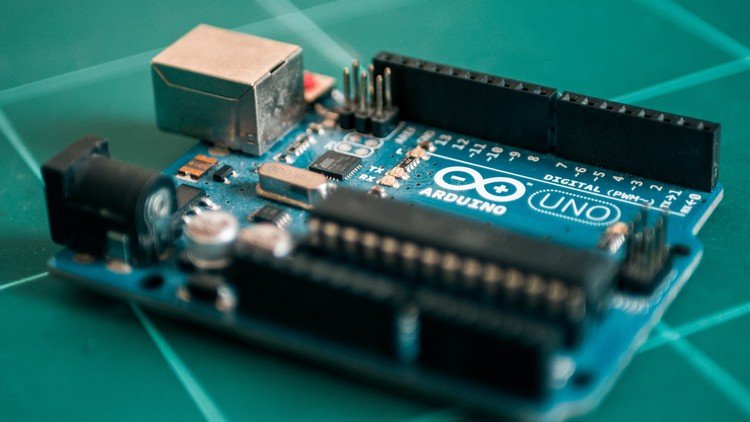What language does Arduino Use?

Does Arduino use C++, or is there a separate Arduino programming language? These questions are among those most frequently asked by beginners. It’s only natural: as most of them don’t have much coding experience, simplicity is crucial for easy experimenting.
The syntax and naming of the Arduino language commands actually came before the hardware. Hernando Barragán created it in 2003, as he was developing a system called Wiring for his master thesis. During the research, he tested the language concepts with students of various programs: the language had to be abstract and simple enough for artists and designers as well as engineers.
We must note the fact that developers tend to disagree about the Arduino language – to be more precise, some insist it’s not even a language. Due to its similarity to C++, some call it a library. However, in this tutorial, we’ll stick to the terminology used on the official page of the Arduino and call it the Arduino programming language.
Introduction to the Arduino language
Due to their simplicity, the language programs you write using the Arduino IDE are called sketches. In their essence, they are text files written in the Arduino language. To save and upload them to your Arduino board, you will need to use the .ino extension.
There are three main parts that make up the Arduino programming language. First of all, you have functions that allow you to control your board. Using functions, you can analyze characters, perform mathematical operations, and perform various other tasks – e.g., digitalRead() and digitalWrite() lets you read or write a value to a certain pin.
There are two functions that every sketch was written in the Arduino language contains. Those are setUp() and loop(). A sketch always starts with setUp(), which executes once after you power-up or reset your board. After you create it, you use the loop() to loop the program repeatedly until you power-off or reset the board.
Next, we have the Arduino values that represent constants and variables. Most of the data types (array, bool, char, float, etc.) are similar to those of C++. You can perform type conversion as well. The last part of the Arduino language is called structure. It contains small code elements, such as operators.
Syntax requirements
As for the syntax, it is not unlike that of C++. The first similarity you might notice is the use of curly braces to wrap your code blocks. If you miss a closing curly brace after using the opening one, the system will throw an error. Thankfully, the Arduino IDE will highlight the closing brace if you click on the opening one, so its a rather simple thing to check. Just like C++, Arduino also requires ending your statements with semicolons. Missing one causes an error to fire.
One more clear similarity is the way you enter comments. There are two ways to do this in Arduino language, based on whether you need a single-line or a block comment. If you only need to comment out one line, start it with two forward slashes:
// a comment here
#define LED_PIN 5
void setup() {
pinMode(LED_PIN, OUTPUT);
If one line is too little for your notes, you can insert a multi-line comment by starting it with a forward slash and an asterisk, and ending it with an asterisk and a forward slash:
/* a comment here
a comment there
there are comments everywhere */
#define LED_PIN 5
void setup() {
pinMode(LED_PIN, OUTPUT);
When you’re adding comments, remember that the Arduino compiler will ignore them completely. This means it will not export them to the processor and use any memory of the microcontroller.
Extending the Arduino programming language
Like most other coding language , the Arduino language allows you to import external libraries. To put it shortly, a library is a set of prewritten code that provides you with extra features. If the built-in libraries are not enough for you, you can download them online or even write your own.
You can use both C libraries and ones that are Arduino-specific. After choosing one, you will need to install it using the Library Manager in the Arduino IDE. To include a specific library in your sketch, use the #include statement and name the library you need to use. Remember not to add a semicolon: this statement doesn’t need to be terminated.
Which programming language is best for Arduino?
Is Arduino based on C or C++?
Arduino doesn’t run either C or C++. It runs machine code compiled from either C, C++ or any other language that has a compiler for the Arduino instruction set.
